Description
The instruction for medical use
of ULTROKS 10 medicine
of ULTROKS 20
the Trade name
of ULTROKS 10
of ULTROKS 20
the International unlicensed
name Rosuvastatin Dosage Form
of the Tablet, film coated, 10 mg and 20 mg
Structure
One tablet contains
active agent – rosuvastatin of 10 mg or 20 mg
in the form of calcium rosuvastatin,
excipients: lactoses monohydrate, calcium carbonate, cellulose microcrystalline PH 102, krospovidon (kollidon CL), SSL (HPC-SSL) hydroxypropyl cellulose, magnesium stearate,
structure of a cover: kollikoat protekt: polyvinyl alcohol – polyethyleneglycol imparted copolymer, polyvinyl alcohol, silicon dioxide, talc, the titan dioxide (E171).
The description
of the Tablet, film coated white color, an oval form, biconvex and with risky on one party
Pharmacotherapeutic group
Hypolipidemic drugs. Reductase HMG SoA inhibitors.
The code of automatic telephone exchange C10A A07
the Pharmacological
Pharmacokinetics Maximum Concentration properties of rosuvastatin in blood plasma is reached approximately in 3-5 hours after oral administration. The absolute bioavailability is about 20%. Rosuvastatin is absorbed, mainly, by a liver. The volume of distribution of rosuvastatin is about 134 l. About 88% of rosuvastatin contact proteins of plasma, generally albumine. Rosuvastatin is exposed to limited metabolism (about 10%). The main metabolite is N-dismetilrozuvastatin which is formed under action C9 P 450 2 cytochrome. More than 90% of pharmacological activity on inhibition of the circulating HMG SoA of reductase are provided with rosuvastatin, the rest – its metabolites.
About 90% of a dose of rosuvastatin are removed in not changed view with excrements (including the absorbed and not absorbed rosuvastatin). The rest is removed with urine. Plasma elimination half-life (T ½) makes about 19 hours. Elimination half-life does not change at increase in a dose of drug.
System exposure of rosuvastatin increases in proportion to a dose.
The therapeutic effect appears within one week after the beginning of therapy by rosuvastatin, in 2 weeks of treatment 90% of the greatest possible effect are reached. The maximum therapeutic effect is usually reached by 4th week and maintained at regular reception.
A pharmacodynamics
of Ultroks – synthetic lipidosnizhayushchy drug. Reduces the increased cholesterol content – lipoproteids of the low density (HS-LPNP), the general cholesterol, triglycerides (TG), increases the content of cholesterol of lipoproteins of the high density (HS-LPVP) and also reduces apolipoprotein B content (ApoV), HS-neLPVP, HS-LPONP (lipoproteids of very low density), TG-LPONP and increases the level of A-I apolipoprotein (ApoA-I), reduces a ratio of HS-LPNP/HS-LPVP, the general HS/HS-LPVP and HS-neLPVP/HS-LPVP and a ratio of ApoB/ApoA-I.
ULTROKS is effective at adult patients with a hypercholesterolemia with or without gipertriglitseridemiya, regardless of race, a floor or age, including at patients with diabetes and with a family hypercholesterolemia.
Indications
– primary hypercholesterolemia (the IIa type, including a family
heterozygous hypercholesterolemia) or the mixed
hypercholesterolemia (IIb type) as addition to a diet when
the diet and other non-drug methods of treatment (for example,
physical exercises, decrease in body weight) are
insufficient
– a family homozygous hypercholesterolemia as addition to
a diet and other holesterinsnizhayushchy therapy (for example, LDL –
aferez), or in cases when similar therapy is not suitable the patient
– as addition to a diet for delay of progressing
of atherosclerosis at adult patients as a part of therapy for decrease
in level of the LPNP general cholesterol (OHS) and XC to the target
Route of administration level and a dose
Inside, not to chew and not to crush a tablet, to swallow entirely, washing down with water. It can be appointed irrespective of meal. In need of administration of drug in a dose of 5 mg it is necessary to divide the tablet Ultroksa of 10 mg.
Prior to the beginning of and during therapy by Ultroks the patient has to keep to a standard hypolipidemic diet. The dose of drug has to be selected individually depending on the purposes of therapy and the response to treatment.
The recommended initial dose for the patients beginning to take the drug or for the patients transferred from intake of other HMG SoA inhibitors of reductase has to make 5 or 10 mg of Ultroks of 1 times a day. When choosing an initial dose it is necessary to be guided by the level of content of cholesterol and to take possible risk of cardiovascular complications into account and also it is necessary to estimate potential risk of development of side effects. In case of need, the dose can be increased to bigger in 4 weeks of administration of drug. Increase in a dose of the drug Ultroks has to be gradual.
Due to the possible development of side effects at reception of a dose 40 mg, treatment by a dosage of 40 mg, can be carried out only at patients with a heavy hypercholesterolemia and with high risk of cardiovascular complications (especially at patients with a family hypercholesterolemia) at which the desirable result of therapy at reception of a dose of 20 mg and which will be under observation of the expert was not achieved (in lipidologichesky, diabetological or cardiological clinics). Especially careful observation of the patients receiving drug in a dose of 40 mg is recommended.
Purpose of a dose of 40 mg is not recommended to the patients who were earlier not taking the drug. After 2-4 week therapies and/or at increase in a dose of Ultroks the control of indicators of lipidic exchange is necessary (if necessary dose adjustment is required).
Elderly patients
to Patients are more senior than 70 years the recommended initial dose of 5 mg.
In others the case is not required to dose adjustment
Patients with a renal failure
From patients with a renal failure easy or moderate severity dose adjustment is not required, the recommended initial dose of drug of 5 mg. At patients with the profound renal failure (clearance of creatinine less than 30 ml/min.) – drug Ultroks use is contraindicated. At patients with moderate renal failures (clearance of creatinine less than 60 ml/min.) – use of drug in a dosage of 40 mg is contraindicated.
Patients with a liver failure
the Experience of use of drug for patients with point higher than 9 on a scale of Chayld-Pyyu is absent.
Special populations. Ethnic groups
When studying the pharmacokinetic Ultroksa parameters at the patients belonging to different ethnic groups the increase in system concentration of rosuvastatin at Japanese and Chinese is noted. It is necessary to consider this fact when prescribing rosuvastatin to these groups of patients. The recommended initial dose for patients of Asian race makes 5 mg.
The patients predisposed to a myopathy
prescribing of drug in a dose of 40 mg is contraindicated to patients with the factors predisposed ment of a myopathy the Recommended initial dose for this group of patients makes 5 mg.
Side effects
Often (> 1/100, <>
– a headache, dizziness
– nausea, an abdominal pain, a constipation
– myalgias
– an asthenic syndrome
Infrequently (> 1/1000, <>
– an itching, rash, urticaria
Seldom (> 1/10,000,
– hypersensitivity reactions, including a Quincke’s
disease
– myopathies, a rhabdomyolysis
– increase in level of hepatic transaminases
– arthralgias
Is very rare (
-jaundice, hepatitis
– polyneuropathy
– memory loss
– the hamaturia
At the patients receiving Ultroks can come to light a proteinuria. In most cases the proteinuria decreases or disappears in the course of therapy and does not mean emergence sharp or progressing of the existing disease of kidneys.
Contraindications
– hypersensitivity to rosuvastatin or any
of drug components
– liver diseases in an active phase, including permanent increase
in serumal activity of transaminases and any increase in activity
of transaminases in blood serum
– the profound renal failures (clearance of creatinine less than 30
ml/min.)
– to the patients predisposed ment of miotoksichesky
complications, a myopathy
– a concomitant use of cyclosporine
– pregnancy and the period of a lactation, lack of adequate methods
of contraception
Cyclosporine
Combined use leads Medicinal interactions to increase (Cmax) and AUC rosuvastatin in blood plasma by 11 times and 7 times respectively. Does not affect plasma concentration of cyclosporine.
Antagonists of vitamin K
the Beginning of therapy by Ultroks or increase in a dose of drug at the patients receiving at the same time antagonists of vitamin K (for example, warfarin), can lead to increase in a prothrombin time. Cancellation of rosuvastatin or a dose decline of drug can lead to reduction of MNO. In such cases the monitoring MNO
Gemfibrozil and other lipidsnizhayushchy means
Combined use of Ultroks is recommended and the gemfibrozila leads to increase twice in the maximum concentration of rosuvastatin in blood plasma (Cmax) and AUC rosuvastatin. Based on data on specific interaction, significant interaction from fenofibrata, perhaps pharmakodinamichesky interaction is not expected pharmacokinetically. Gemfibrozil, fenofibrat, other fibrata and lipidsnizhayushchy doses of niacin (either doses big or equivalent 1 g/day) increased risk of emergence of a myopathy at simultaneous use with HMG SoA inhibitors – reductases, it is possible because they can cause a myopathy and when using as monotherapy. At a concomitant use of drug with gemfibrozily and other lipidsnizhayushchy means the initial dose of drug of 5 mg is recommended to patients.
Inhibitors of proteases
In spite of the fact that the dot mechanism of interaction is not known, joint intake of inhibitors of proteases can lead to significant increase in exposure of rosuvastatin. Simultaneous use of 20 mg of rosuvastatin with the combined drug containing two inhibitors of proteases (400 mg lopinavira/100 mg of a ritonavir) led to approximately double or fivefold increase in AUC (0-24) (to the area under a curve concentration time) and (Cmax) (the maximum concentration in blood plasma) rosuvastatin respectively. Therefore the concomitant use of rosuvastatin and inhibitors of proteases at treatment of patients with HIV is not recommended
Antacids
Simultaneous use of Ultroks and suspensions of the antacids containing aluminum and magnesium hydroxide leads to decrease in plasma concentration of rosuvastatin approximately for 50%. This effect is significant more weakly if antacids are applied in 2 hours after intake of rosuvastatin.
Erythromycin
leads Simultaneous use of Ultroks and erythromycin to reduction of AUC (0 – t) rosuvastatin for 20% and Cmax of rosuvastatin for 30%. Similar interaction can result from strengthening of motility of the intestines caused by intake of erythromycin.
Oral contraceptives / gormonozamestitelny therapy
increases Simultaneous use of rosuvastatin and oral contraceptives AUC ethinylestradiol and AUC Norgestrelum by 26% and 34%, respectively. Such increase in plasma concentration has to be considered at selection of a dose of oral contraceptives. However the similar combination was widely used during conduct of clinical trials and well transferred by patients.
Digoxin
is not expected clinically significant interaction of rosuvastatin with digoxin.
P450 cytochrome enzymes
Rosuvastatin is not either inhibitor, or the inductor of enzymes of P450 cytochrome. Besides, rosuvastatin is weak substrate for these enzymes. Clinically significant interaction between rosuvastatin, flukonazoly (CYP2C9 and CYP3A4 inhibitor) and ketokonazoly was not noted (CYP2A6 CYP3A4 inhibitor). Combined use of Ultroks and an itrakonazol (CYP3A4 inhibitor) increases AUC rosuvastatin by 28% Thus, the interaction connected with P450 cytochrome metabolism is not expected.
Special instructions
With care
For doses less than 40 mg: the personal or family anamnesis of hereditary muscular diseases and the previous anamnesis of muscular toxicity when using other GMG-HMG SoA inhibitors of reductase or fibrat, excessive alcohol intake, a hypothyroidism, race (Asian race), co-administration from fibrata.
Presence of risk of developing a myopathy/rhabdomyolysis – a renal failure, age is more senior than 65 years, states at which increase in plasma concentration of rosuvastatin, liver diseases in the anamnesis, sepsis, arterial hypotension, extensive surgical interventions, injuries, heavy metabolic, endocrine or electrolytic disturbances or uncontrollable epilepsy is noted.
Use in pediatric practice
the Efficiency and safety of use of drug for children is not established. It is not recommended to apply to children up to 18 years.
From the musculoskeletal system
At drug ULTROKS use, in particular at reception of the doses of drug exceeding 20 mg it was reported about the following impacts on the musculoskeletal system: myalgia, myopathy, in rare instances rhabdomyolysis.
Definition of a kreatinfosfokinaza
of KFK should not be carried out after intensive physical activities or in the presence of other possible reasons of increase in KFK, can lead to incorrect interpretation of the received results. In case the KFK initial level is significantly increased (5 times higher, than the upper bound of norm), in 5 – 7 days it is necessary to take repeated measurement. It is not necessary to begin therapy if the repeated test confirms the KFK initial level (more than 5 times higher in comparison with the upper bound of norm).
It is necessary to inform the patient on need of the immediate message to the doctor about cases of unexpected appearance of muscular pains, muscle weakness or spasms, especially in combination with an indisposition and fever. At such patients it is necessary to determine the KFK level. Therapy has to be stopped if the KFK level is considerably increased (more than by 5 times in comparison with the upper bound of norm) or if symptoms from muscles are pronounced and cause daily discomfort (even if the KFK level is 5 times less in comparison with the upper bound of norm). If symptoms disappear and the KFK level returns to norm, it is necessary to consider a question of repeated appointment of Ultroks or other HMG SoA-reductases inhibitors in smaller doses at careful observation of the patient. Routine control of KFK in the absence of symptoms is not reasonable.
Signs of increase in impact on skeletal muscles at Ultroks’s reception and the accompanying therapy are noted. It was reported about increase in number of cases of a miositis and a myopathy at the patients accepting other HMG SoA-reductases inhibitors in combination with derivatives of fibrinous acid, including gemfibrozit, cyclosporine, niacin, azolny antifungal means, inhibitors of proteases and makrolidny antibiotics. Gemfibrozil increases risk of emergence of a myopathy at the combined appointment with some HMG SoA-reductases inhibitors. Thus, co-administration of Ultroks and a gemfibrozil is not recommended. The ratio of risk and possible advantage at combined use of Ultroks and fibrat or Niacinum has to be carefully weighed.
In 2-4 weeks after an initiation of treatment and/or at increase in a dose of Ultroks the control of indicators of lipidic exchange is necessary (if necessary dose adjustment is required).
The liver
Is recommended to carry out definition of indicators of function of a liver prior to therapy and in 3 months after the beginning of therapy. Ultroks’s reception it is necessary to stop or reduce a drug dose if the level of activity of transaminases in blood sera by 3 times exceeds the upper bound of norm. At patients with a hypercholesterolemia owing to a gipoterioz or a nephrotic syndrome therapy of basic diseases has to be carried out prior to treatment by Ultroks.
Ethnic groups
Among the Chinese and Japanese patients the increase in system concentration of rosuvastatin in comparison with the indicators received among patients – Europeans is noted.
Features of influence on ability to driving of motor transport and to control of mechanisms
During the driving or work with mechanisms need to be considered that during therapy there can be dizziness.
Simtoma’s overdose – expressiveness of symptoms of side effects
Treatment – symptomatic and the supporting actions. Control of function of a liver and the KFK level is necessary. It is improbable that the hemodialysis will be effective.
A form of release and packing
of the Tablet, film coated 10 mg and 20 mg
On 14 tablets in blister strip packaging from a film of polyvinylchloride and printing aluminum foil.
On 1 or 2 planimetric packs together with the instruction for medical use in the state and Russian languages place in a pack from cardboard.
To Store storage conditions at a temperature not over 25 of 0C in the dry, protected from light place.
To store out of children’s reach!
A period of storage
2 years
not to apply after the storage expiration
Prescription status
According to the prescription
Republic of Kazakhstan JSC Nobel Almatinskaya Pharmatsevticheskaya Fabrika Producer,
Almaty, Shevchenko St. 162 E.
The address of the organization accepting in the territory of the Republic of Kazakhstan claims from consumers on quality of products (goods)
of JSC Nobel Almatinskaya Pharmatsevticheskaya Fabrika
Republic of Kazakhstan, Almaty, Shevchenko St. 162 E.
Phone number: (+7 727) 275-03-05
Fax number: (+7 727) 277-64-34
the e-mail address of nobel@nobel-aff.kz
Additional information
| Ingredient |
|---|





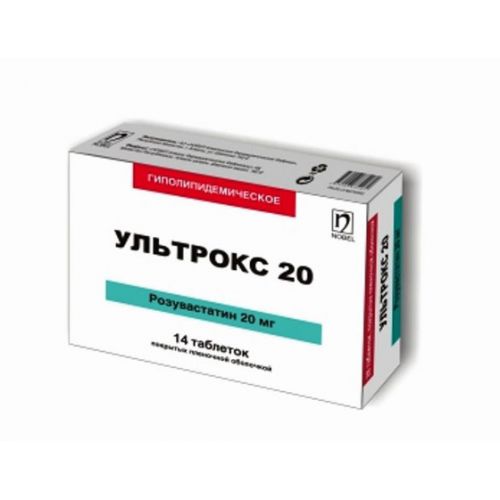
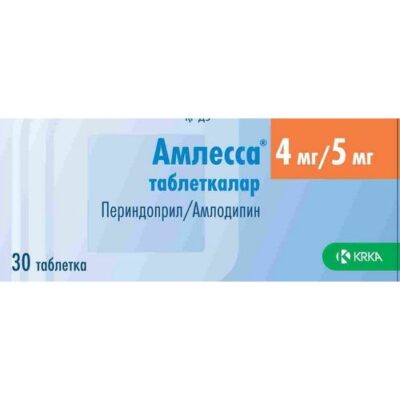

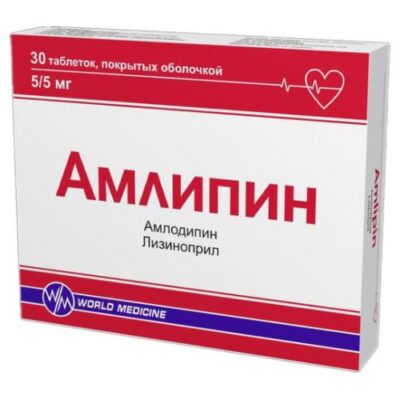
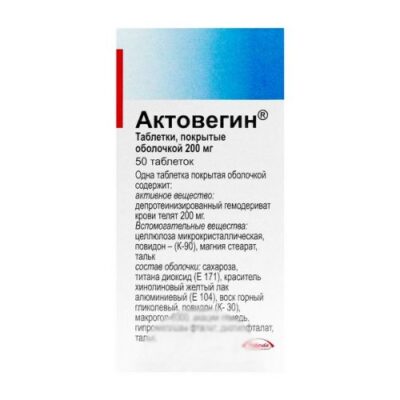
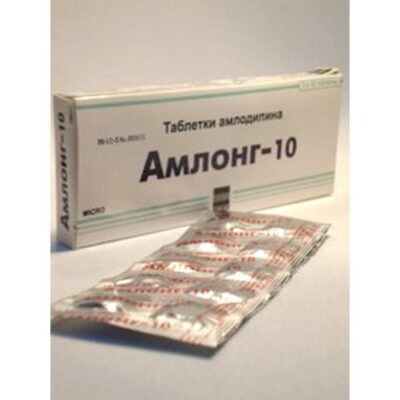
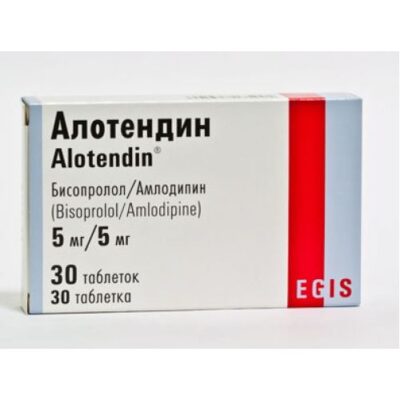
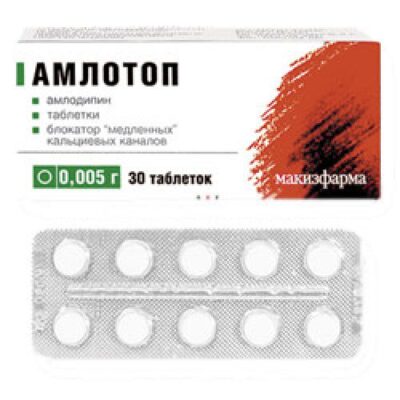
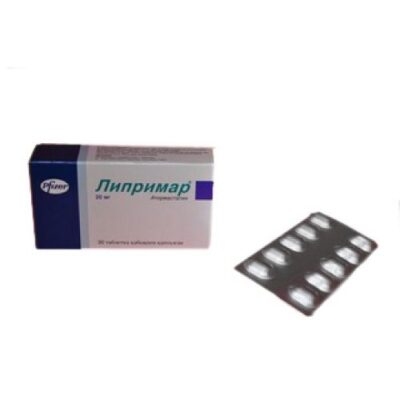
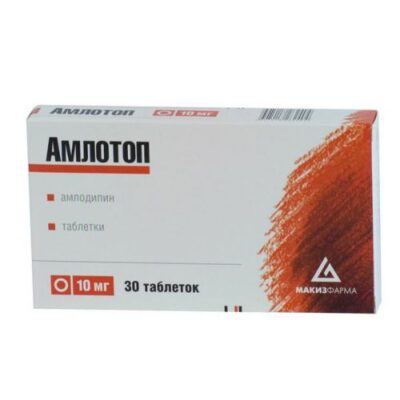
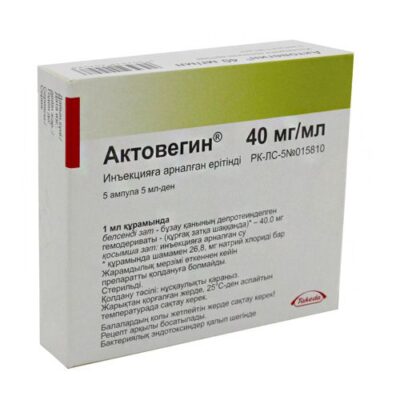






Reviews
There are no reviews yet.